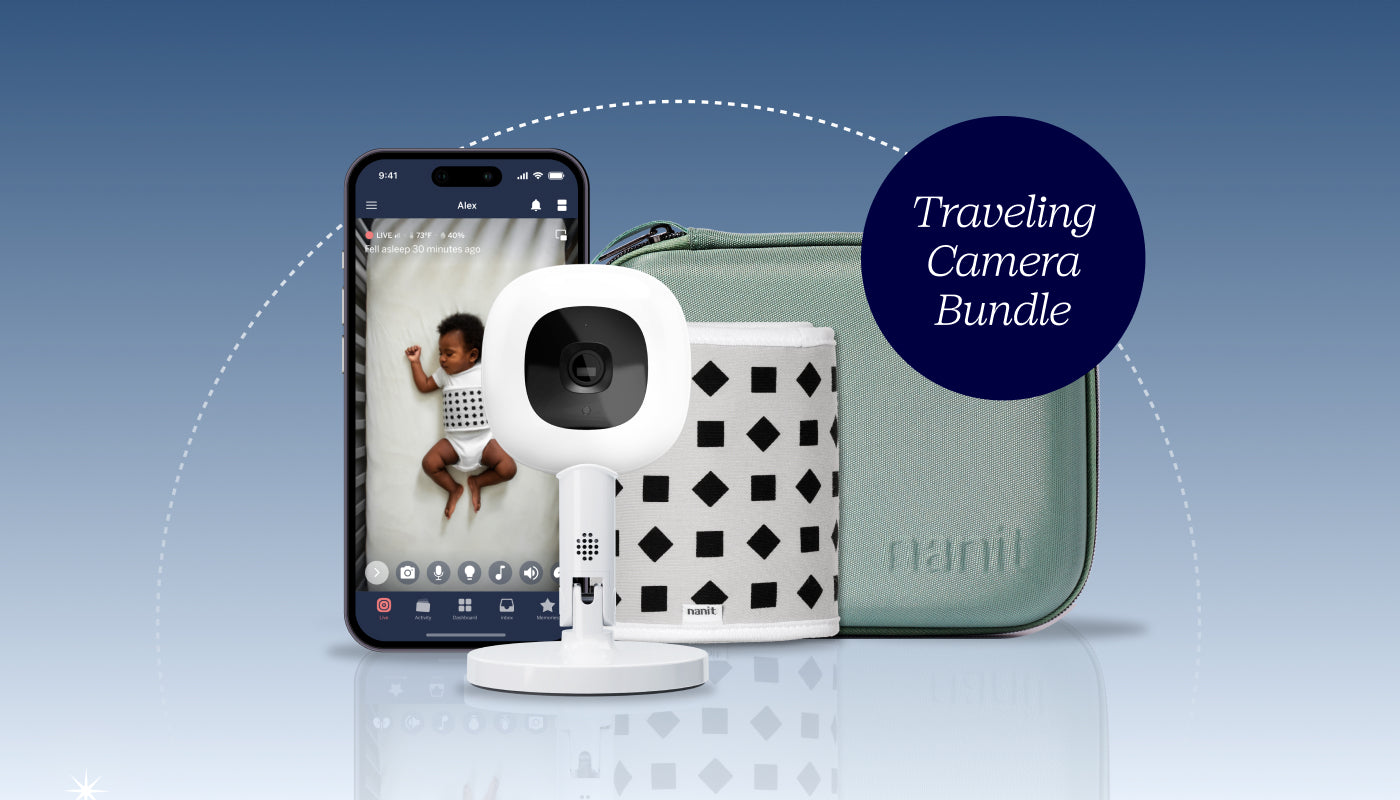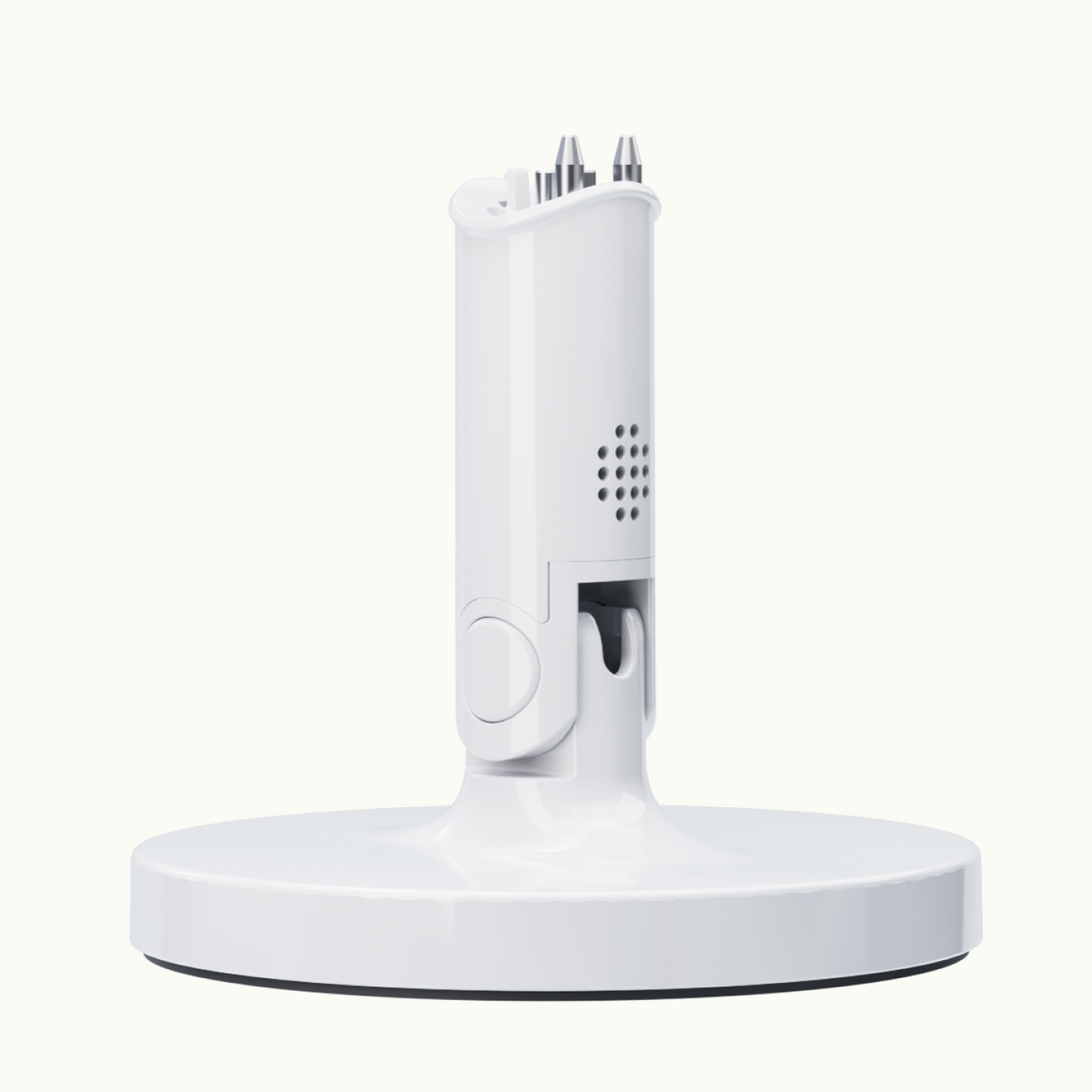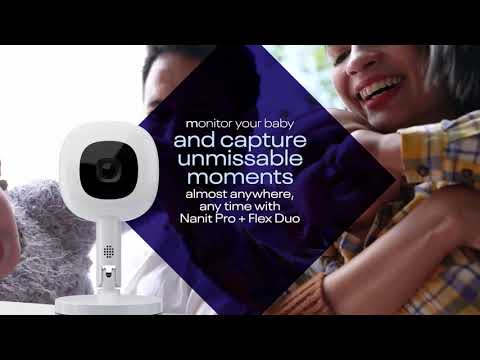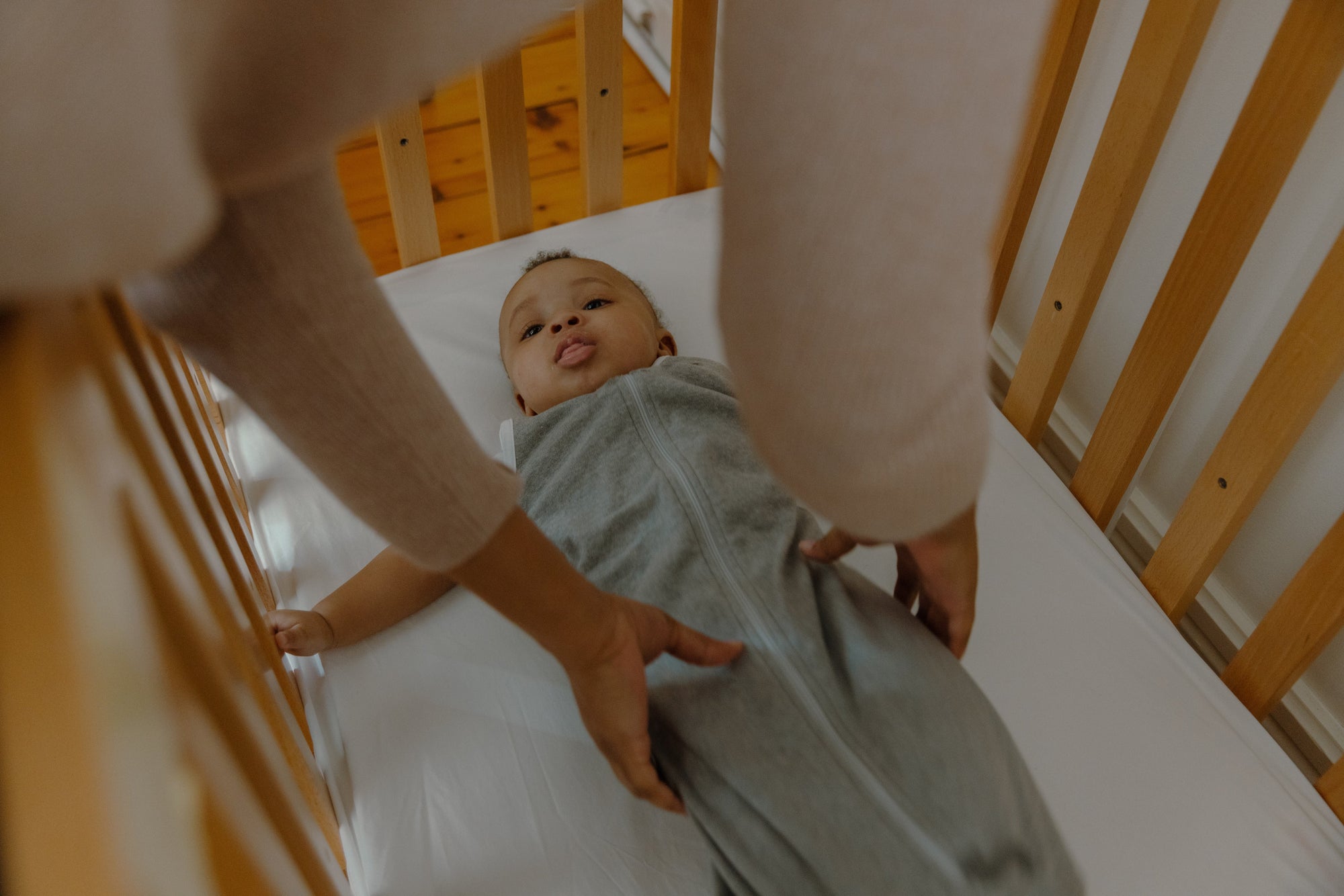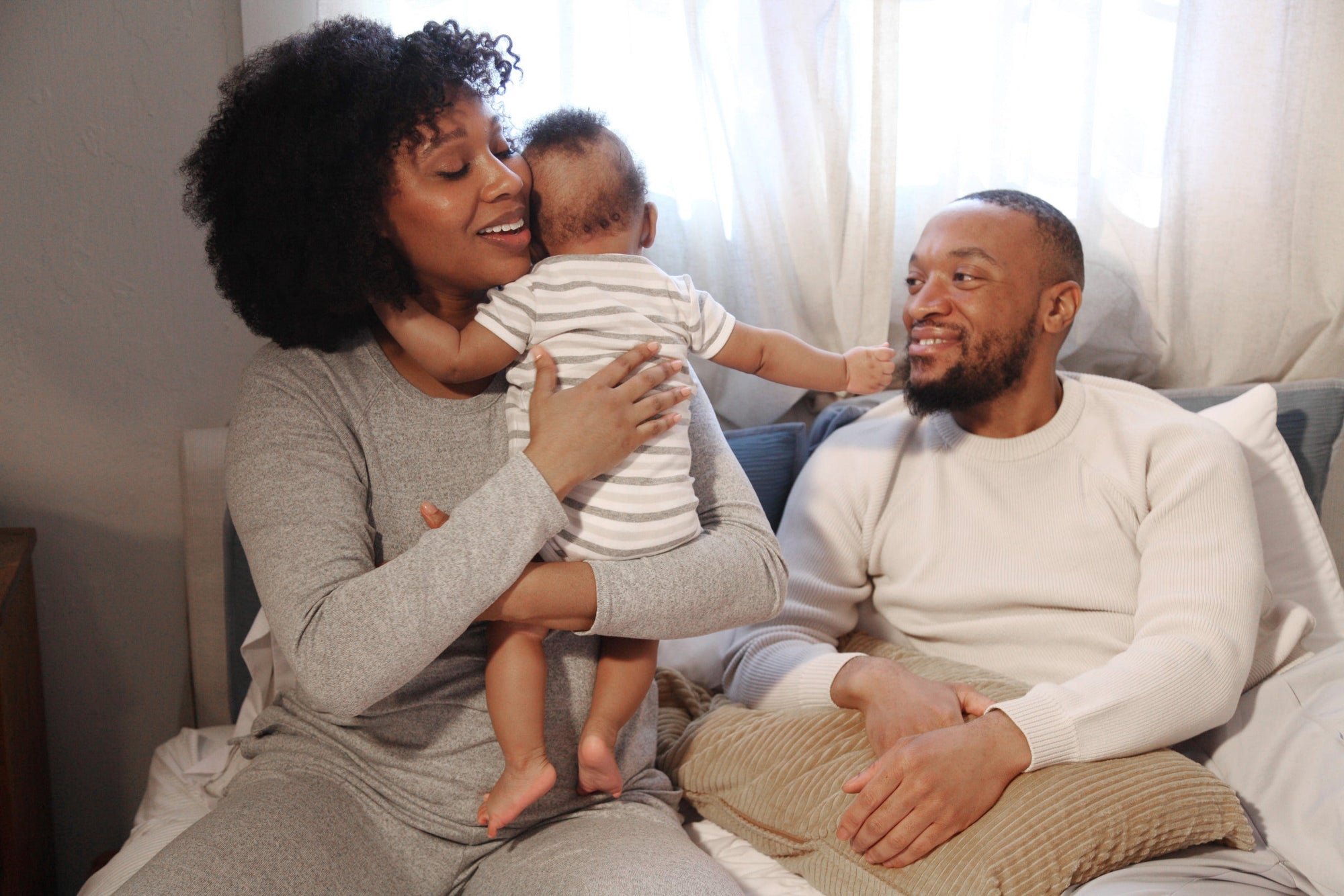Ideal napping conditions: Should babies always nap in the dark?
For adults, naps are a sweet, sweet luxury. For your little one, however, naps are a necessity. A successful nap schedule will not only set your baby up for better health and development, but it also plays a role in your well-being as a parent. People commonly ask questions like “how long should babies nap” and “where should babies nap?” However, there’s one element of napping that many parents overlook—the room’s lighting levels.
At night, it’s easy to create a dark, cocoon-like environment for your little one to snooze, but should babies nap in the dark during the day, too? Or do light levels actually matter for naptime? In this article, we explore the impact of napping in the dark on a baby's sleep patterns, from benefits to practical tips on reaching naptime nirvana.
Is total darkness necessary?
It’s a parenting golden rule: a well-rested baby makes a happy baby. Naps play an essential part in the sleep equation. However, you might pause before you keep the curtains open.
Why babies need darkness for daytime naps
While nighttime sleep is typically shrouded in dark, research points to darkness benefitting naptime sleep as well. Darkness sets your baby up for higher-quality sleep and better sleeping patterns. During your baby’s midday snooze, they may benefit from a dark environment for these reasons:
- Circadian rhythm. During the first three months of life, babies are slowly developing their circadian rhythm, which is the body’s natural sleep-wake cycle across a 24-hour day. During this precious initial stage, exposure to natural light during the day and darkness at night and during naps can help synchronize and reinforce this rhythm in your baby.
- Restful sleep. A dark room beckons you to sleep, drifting you into a deeper, more restful slumber. For your baby, it’s no different. Darkness signals to their tiny, developing brains that it's time to rest. By keeping a darker room, you can help them stay asleep all naptime long.
- Reduced distractions. Babies are naturally curious creatures. Even when they should be resting, they can't help but explore their surroundings with their eyes. A dark room minimizes visual distractions and stimulation, allowing your baby to focus on the task at hand—drifting off into dreamland. By eliminating the temptation to examine their surroundings, you're helping them get to sleep faster and stay asleep longer.
How do I make my baby’s room dark for sleep?
Ready to turn the nursery into a slumber paradise? In just a few simple steps, you can eliminate any distracting or sleep-disturbing light for your baby.
Set the stage for your little star's sweetest dreams with these tips:
- Blackout shades and blinds. High-coverage shades and/or blinds can provide effective light-blocking when drawn. Make sure they fit well and don't leave gaps around the window edges.
- Cool temperatures. Babies tend to sleep better in a cool room. While there’s no definitive “best” temperature, a comfortable temperature for most babies is around 68-72 degrees Fahrenheit. You can use a monitor with a temperature and humidity sensor or room thermometer to ensure the room is just right.
- White noise. While not directly related to darkness, white noise machines can be a game-changer in creating a peaceful sleep environment. Try to find a white noise machine with high control options and multiple sound settings.
- Consistency. Routines are the bread and butter of a good nap or bedtime. Before a nap, create a small set of repeatable and soothing activities. Changing into sleep wear, book reading, and music are all great activities to settle your baby into a naptime mood.
Create your baby’s dream sleep room with Nanit
It’s safe to say that darkness is a welcome component of naptime. By darkening your baby’s room, you can build better sleep habits and healthier, happier waking hours—and that starts with the right tools.
From naptime to bedtime, the Nanit Sound + Light offers sweet dreams for your little one. With 11 sounds, a customizable nightlight, and real-time app monitoring, our smart sound machine builds a sensory experience unlike any other for naptime. Combine it with blackout curtains, a cool temperature, and your smart baby monitor, so that both you and your baby can feel ready to snooze in no time.
Take your baby’s rest to the next level and explore Nanit for yourself.
Key takeaways
- Darkness during baby naps is beneficial as it helps synchronize the baby's circadian rhythm, promotes restful sleep by distractions, allowing the baby to fall asleep faster and stay asleep longer.
- To create a dark environment for your baby's nap, consider using blackout shades and/or blinds to block external light sources. Maintaining a cool room temperature and using a white noise machine can also enhance the sleep environment.
- Consistency in establishing naptime routines with soothing activities can contribute to better naps and healthier waking hours for your baby. Nanit offers tools like the Sound + Light machine to enhance the sensory experience during naptime.
Sources:
NIH. PERSPECTIVE: The Long-Term Effects of Light Exposure on Establishment of Newborn Circadian Rhythm. https://www.ncbi.nlm.nih.gov/pmc/articles/PMC6175794/
NIH. White noise and sleep induction. https://pubmed.ncbi.nlm.nih.gov/2405784/
Sleep Advisor. 7 Baby Sleep Facts Every Parent Should Know (Infographic). https://www.sleepadvisor.org/baby-sleep-facts-for-parents/
Sleep Foundation. How To Make Your Room Dark for a Good Night’s Sleep. https://www.sleepfoundation.org/bedroom-environment/making-your-room-dark
Sleep Foundation. The Best Room Temperature for a Sleeping Baby. https://www.sleepfoundation.org/baby-sleep/best-room-temperature-for-sleeping-baby
Sleep Health Foundation. Why is it so important for your newborn to sleep well. https://www.sleephealthfoundation.org.au/news/sleep-blog/why-is-it-so-important-for-your-newborn-to-sleep-well.html
